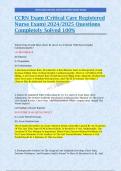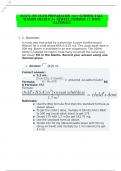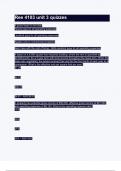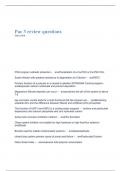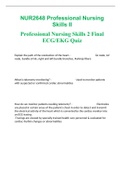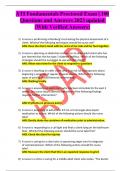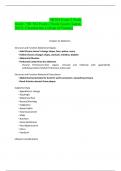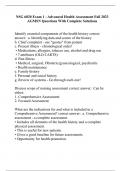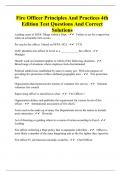Exam (elaborations)
CCRN Exam (Critical Care Registered Nurse Exam) 2024/2025 Questions Completely Solved 100%
- Course
- Institution
CCRN Exam (Critical Care Registered Nurse Exam) 2024/2025 Questions Completely Solved 100% The CCRN certification exam assesses a nurse’s knowledge and expertise in caring for critically ill patients, including topics such as hemodynamics, pharmacology, and patient assessment. Nurses who pass th...
[Show more]
